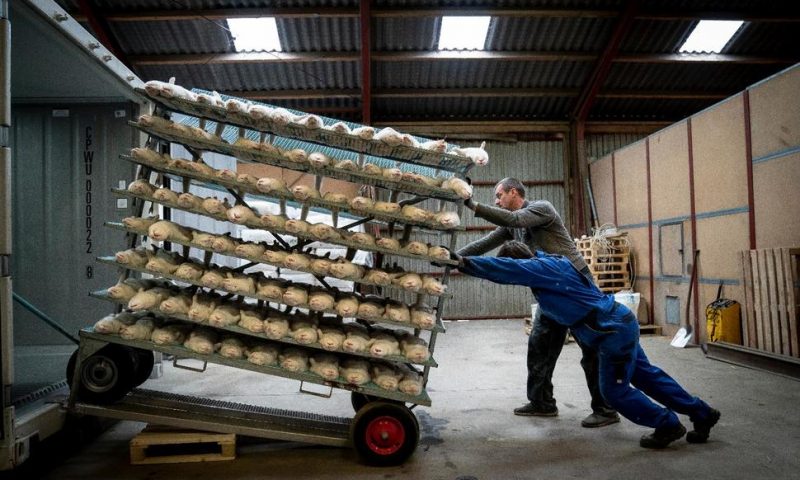The cooperative that sells nearly half of Denmark’s mink furs, will gradually shut down over the next two to three years after the government ordered the culling of millions of animals raised in farms.
COPENHAGEN, DENMARK — The cooperative that sells nearly half of Denmark’s mink furs, will “gradually downsize” and shut down over the next 2-3 years after the government last week ordered the culling of millions of animals to fight an outbreak of COVID-19 among the animals and staff.
Kopenhagen Fur CEO Jesper Lauge said Thursday that the discovery of coronavirus infections put the Danish mink industry “in an extreme and unusually difficult situation.”
Kopenhagen Fur employs some 300 people and sells the furs of the farms in its cooperative. There are 1,139 mink farms in Denmark, employing about 6,000 people, according to the industry. It was unclear how many of the farms would shut down, though their prospects are not good.
Danish farms together account for 40% of global mink fur production and are the world’s biggest exporter. Most of the cooperative’s exports go to China and Hong Kong, and it claims to be the world’s largest auction house for furs. Those auctions will continue.
Earlier this month, Denmark reported that 11 people were sickened by a mutated version of the coronavirus that had been observed among the mink. The country began killing farmed minks in the north of the country and plans to cull 15 million in all.
The coronavirus evolves constantly as it replicates but, to date, none of the identified mutations have changed anything about COVID-19’s transmissibility or lethality.
On Thursday, the European Centre for Disease Prevention and Control issued new guidance to curb the spread of the coronavirus between minks and humans, warning that the transmission of COVID-19 among animals could speed up the number of mutations in the virus before it potentially jumps back to people.
The ECDC said that when COVID-19 starts spreading on a mink farm, the large numbers of animal infections means “the virus can accumulate mutations more quickly in minks and spread back into the human population.” The agency said allowing it to spread within minks could have worrisome consequences.

